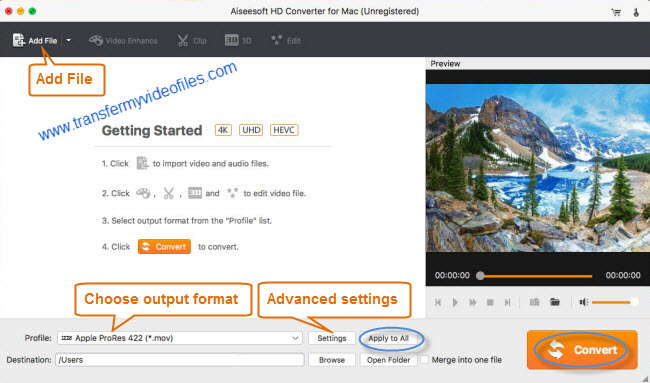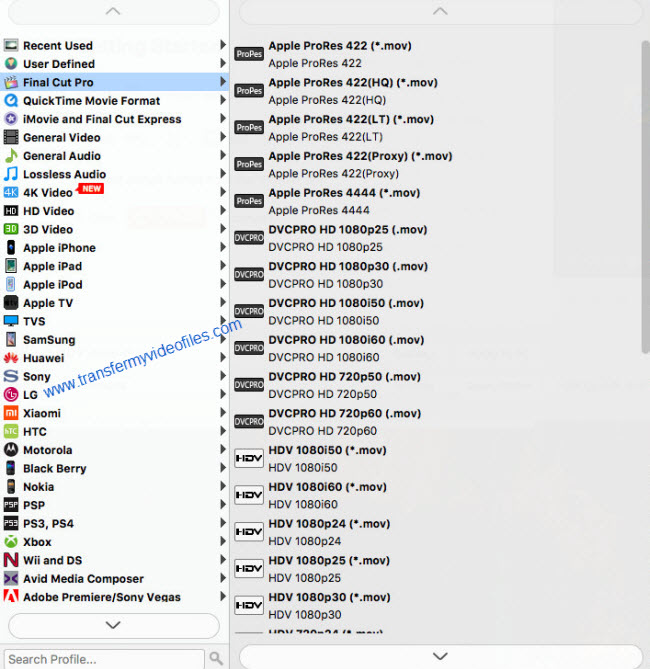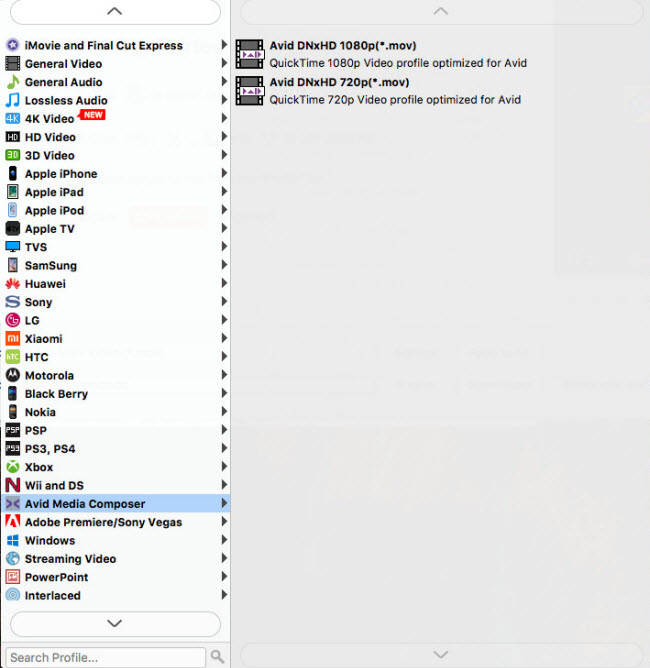Need help with Canon XF-AVC and DaVinci Resolve workflow? If so, you may wish to read this post. It demonstrates a quick way of converting Canon XF-AVC MXF files to ProRes/DNxHD codec for use in DaVinci Resolve with optimum performance.
Canon XF-AVC MXF for DaVinci Resolve post production work?
“I am going to update my camera from Canon EOS 5D Mark III to XC10 4K Camcorder in the coming months and have a question in regards to Canon XF-AVC codec and DaVinci Resolve. Which codec would be best suited for DaVinci Resolve post production work? I have read Grass Valley seems to support XF-AVC codec, is that true? Anyone here have experience with the Canon XF-AVC MXF format?”

Yes, it’s true. Canon has officially announced that XF-AVC is compatible with Grass Valley. For those who still need to transcode XF-AVC MXF for use in Resolve natively and fluidly, we would recommend converting to ProRes or DNxHD, which DaVinci Resolve will recognize and handle well. To get access to file conversion, third party app like HD Video Converter is required. Read on to find a step-by-step guide talking about how to rewrap Canon XF-AVC MXF footage to ProRes/DNxHD for Resolve.
[Guide] How to encode Canon XF-AVC for DaVinci Resolve editing?
Required app
HD Video Converter


Download and install HD Video Converter, then follow these steps:
Step 1: Run HD Video Converter as a professional Canon XF-AVC to DaVinci Resolve Converter. When its main interface comes up, click ‘Add File’ to load source video to it.

Step 2: Select output format for DaVinci Resolve
1) Convert XF-AVC to ProRes for Resolve
From ‘Profile’ list, move to ‘Final Cut Pro’ catalogue, and select ‘Apple ProRes 422 (*.mov)’ as target format.

Note that the ProRes output is only valid in the Mac version of HD Video Converter.
2) Transcode Canon XF-AVC to DNxHD for DaVinci Resolve
From ‘Profile’ list, select ‘Avid DNxHD (*.mov)’ as output format under ‘Avid Media Composer’ column.

Important: If you’ve loaded a number of video clips to do batch conversion, please do remember ticking off ‘Apply to All’ option before you start.
Step 3: Adjust video and audio settings (for advanced users)
If necessary, you can click ‘Settings’ button and go to ‘Profiles Settings’ panel to modify video and audio settings like video encoder, resolution, video bit rate, frame rate, aspect ratio, audio encoder, sample rate, audio bit rate, and audio channels. 3D settings are also available.
Step 4: Click ‘Convert’ to start Canon XF-AVC files to ProRes/DNxHD conversion.
Step 5: Click ‘Open Folder’ to get generated ProRes/DNxHD QuickTime files for use in DaVinci Resolve with optimum performance.
Related posts
Trouble working with MXF files in DaVinci Resolve
Sony PXW-Z100 4K XAVC to FCP and DaVinci Resolve
How to import and edit AVCHD footage within DaVinci Resolve?
DaVinci Resolve workflow with Sony F55/F5 XAVC MXF footage
